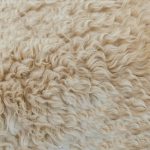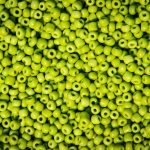Polyamide is a strong, lightweight synthetic fabric made from long polymer chains linked by amide groups—often called nylon. You’ll find it in sportswear and activewear because it stretches, resists wear, and wicks moisture to keep you dry. It feels soft like silk but requires gentle care to maintain its shape. Polyamide’s production does impact the environment, but recycled options help. If you want to understand its uses and how to care for it, keep exploring its features.
Table of Contents
Key Takeaways
- Polyamide is a synthetic fabric made from long polymer chains linked by amide groups, commonly known as nylon.
- It is strong, elastic, lightweight, and moisture-wicking, making it suitable for activewear and performance clothing.
- Polyamide dries quickly and resists wear, but is less effective at resisting stretching and shrinking compared to polyester.
- It is widely used in sportswear, industrial products, and household items due to its durability and functionality.
- Polyamide production relies on petrochemicals, with environmental concerns including carbon emissions and microplastic pollution.
Definition and Composition of Polyamide
Polyamide is a versatile synthetic fabric known for its strength and durability. When you choose polyamide, you’re selecting a material primarily made from long chains of polymers linked by amide groups.
These chains come from the reaction between diamines and dicarboxylic acids, creating a tough, resilient fiber. You’ll often hear polyamide referred to as nylon, a common type used in textiles and industry.
Polyamide forms through diamines and dicarboxylic acids, creating durable fibers commonly known as nylon.
Its synthetic nature means it’s man-made, designed to mimic and improve upon natural fibers. Understanding this composition helps you appreciate why polyamide can withstand wear and tear better than many other fabrics.
It’s engineered for performance, making it a popular choice for everything from clothing to industrial applications.
Key Properties of Polyamide Fabric
When you pick a fabric like this, you’re getting more than just durability. Polyamide offers a unique blend of qualities that make it stand out.
Here are the key properties you’ll appreciate:
- Strength and Elasticity: It’s tough yet flexible, so it resists wear and maintains shape.
- Lightweight: You won’t feel weighed down, making it comfortable for everyday use.
- Moisture-Wicking: It efficiently pulls moisture away from your skin, keeping you dry.
- Quick-Drying: Thanks to its synthetic nature, it dries faster than many natural fabrics.
These features mean polyamide performs well in various conditions, combining comfort with resilience.
When you choose polyamide, you’re selecting a fabric designed to keep up with your active lifestyle.
Common Applications of Polyamide
You’ll find polyamide in your favorite sportswear and activewear because it handles moisture and movement well.
It’s also a key material in many industrial and technical products thanks to its strength and durability.
Plus, polyamide pops up in everyday household items, making life a bit easier without you even noticing.
Sportswear and Activewear
Because sportswear demands durability and flexibility, manufacturers often turn to polyamide for its exceptional strength and stretch.
When you wear activewear made from polyamide, you benefit from:
- Moisture-wicking properties that keep you dry during intense workouts.
- Lightweight fabric that won’t weigh you down.
- High resistance to abrasion, making your gear last longer.
- Quick-drying capability, so you can move from gym to street comfortably.
Polyamide’s ability to maintain shape and resist wrinkles means your sportswear looks fresh even after multiple uses.
Whether you’re hitting the gym, running, or practicing yoga, polyamide keeps you comfortable and supported.
Industrial and Technical Uses
Polyamide doesn’t just excel in sportswear; its strength and versatility make it a staple in many industrial and technical fields.
When you need materials that resist abrasion and chemicals, polyamide fibers often fit the bill. You’ll find them in conveyor belts, ropes, and tire cords, where durability under stress is critical.
If you work with electrical components, polyamide’s excellent insulating properties come in handy for cable sheathing and connectors.
In automotive and aerospace industries, manufacturers rely on polyamide for lightweight, high-strength parts that improve efficiency without sacrificing safety.
Additionally, you’ll encounter polyamide in filtration systems and protective gear, where its toughness and resistance to heat and wear protect both equipment and users.
Using polyamide means you get reliable performance in demanding environments.
Everyday Household Items
Although you mightn’t realize it, many everyday household items rely on polyamide for their durability and functionality. This versatile fabric shows up in your daily life more than you’d expect.
Here are four common household items made with polyamide:
- Kitchen utensils with nylon handles — they resist heat and wear.
- Upholstery and carpets — polyamide fibers offer strength and stain resistance.
- Clothing like socks and activewear — it provides stretch and moisture-wicking.
- Luggage and backpacks — polyamide’s toughness protects your belongings.
Next time you use these items, you’ll know polyamide plays a key role in keeping them durable and reliable.
It’s a fabric designed to handle everyday wear and tear with ease.
Differences Between Polyamide and Other Synthetic Fabrics
You’ll notice polyamide stands out when compared to polyester and acrylic, especially in durability and comfort.
Understanding these differences helps you choose the right fabric for your needs.
Let’s explore how polyamide compares in strength, feel, and performance.
Polyamide Vs Polyester
When choosing between synthetic fabrics, understanding how polyamide and polyester differ can help you make better decisions for your wardrobe or projects. Both are durable, but their properties suit different needs.
- Moisture Absorption: Polyamide absorbs more moisture, making it comfortable for activewear, while polyester dries faster.
- Softness: Polyamide feels softer and silkier, ideal for intimate clothing; polyester tends to be stiffer.
- Durability: Polyester resists stretching and shrinking better, great for heavy-duty use.
- Environmental Impact: Both are petroleum-based, but polyester often has a higher carbon footprint due to production methods.
Knowing these differences helps you pick the fabric that matches your comfort, durability, and environmental preferences.
Polyamide Vs Acrylic
Just like polyester, acrylic is another synthetic fabric that competes with polyamide in various applications.
When you compare polyamide and acrylic, you’ll notice polyamide is known for its strength and elasticity, making it ideal for activewear and hosiery.
Acrylic, on the other hand, mimics wool’s softness and warmth, so it’s often used in sweaters and blankets.
You’ll find acrylic is lightweight and resistant to moths, while polyamide offers better abrasion resistance.
Both fabrics dry quickly, but acrylic tends to hold heat more, which might affect your comfort in warmer conditions.
Durability and Comfort Comparison
Although synthetic fabrics share many characteristics, polyamide stands out for its unique balance of durability and comfort.
When comparing polyamide to other synthetics like polyester, acrylic, or spandex, you’ll notice key differences:
- Strength: Polyamide resists wear and tear better, lasting longer under frequent use.
- Flexibility: It stretches more comfortably, making it ideal for activewear.
- Moisture Management: Polyamide wicks sweat efficiently, keeping you dry and comfortable.
- Softness: Unlike some rougher synthetics, polyamide feels smooth against your skin.
If you want a fabric that combines toughness with a pleasant feel, polyamide is a solid choice.
It delivers durability without sacrificing comfort, unlike many other synthetic options.
Care and Maintenance Tips for Polyamide Clothing
Since polyamide fibers are durable yet sensitive to high heat, you should wash your polyamide clothing in cold or lukewarm water to maintain its shape and color. Avoid bleach and fabric softeners, as they can damage the fibers. When drying, air-dry your garments away from direct sunlight or use a low-heat setting in the dryer. Iron on low heat if necessary, or better yet, steam to remove wrinkles without risking damage.
| Care Aspect | Recommended Action | What to Avoid |
|---|---|---|
| Washing | Cold or lukewarm water | Hot water, bleach |
| Drying | Air-dry or low heat | High heat, direct sun |
| Ironing/Steaming | Low heat or steam gently | High heat ironing |
Follow these tips to keep your polyamide clothes looking fresh longer.
Environmental Impact and Sustainability of Polyamide
When you choose polyamide clothing, it’s important to understand its environmental impact and sustainability challenges.
Polyamide, a synthetic fabric, is made from petrochemicals, which means its production relies heavily on fossil fuels. This leads to significant carbon emissions.
Additionally, polyamide garments can shed microplastics during washing, contributing to ocean pollution.
However, some manufacturers now use recycled polyamide, reducing waste and energy consumption.
Here are key points to reflect on:
- Polyamide production emits considerable greenhouse gases.
- Washing polyamide releases microplastics into waterways.
- Recycling polyamide lowers environmental footprint.
- Sustainable brands are increasing use of eco-friendly polyamide alternatives.
Frequently Asked Questions
Can Polyamide Fabric Cause Allergic Reactions?
You might experience allergic reactions to polyamide fabric if you have sensitive skin or a specific allergy. While rare, it can cause irritation or itching. Always test new fabrics on a small skin area first.
Is Polyamide Fabric Suitable for Hot Weather?
You might find polyamide fabric less breathable in hot weather, as it traps heat and moisture. If you want comfort in heat, you’ll want to choose lighter, natural fabrics like cotton or linen instead.
How Does Polyamide Fabric Feel Compared to Cotton?
You’ll find polyamide feels smoother and silkier than cotton, but less breathable. While cotton’s soft and natural, polyamide’s lightweight and stretchy, making it great for activewear, though it might feel less cozy against your skin.
Can Polyamide Be Blended With Natural Fibers?
Back in the days of knights and castles, you’d blend polyamide with natural fibers like cotton or wool to get the best of both worlds. You can totally do that now, enhancing durability and comfort effortlessly.
Does Polyamide Fabric Stretch or Lose Shape Over Time?
You’ll find polyamide fabric stretches well and maintains its shape over time. It’s resilient, resisting sagging and deformation, so your clothes stay fitted longer without losing their original form, even after repeated wear and washing.
- Does Chiffon Fabric Stink - July 15, 2025
- Does Chiffon Fabric Affect the Economy - July 15, 2025
- Does Cotton Fabric Have a Nap - July 15, 2025







